Tanks of the Soviet Union during the Great Patriotic War
History Soviet tank building in the prewar and war years had both serious achievements and impressive failures. At the first stage of the war with the advent of the T-34, the Germans had to catch up with us and create models tanks and anti-tank artillery, capable of withstanding the threats posed by the T-34. They quickly solved this problem and by the end of 1942 the Wehrmacht had more advanced tanks and means to combat the Soviet tank threat. At the second stage of the war, Soviet tank builders had to catch up with the Germans, but failed to achieve full parity with them in terms of the main tactical and technical characteristics of the tanks.
The stages of the formation of Soviet light tanks in the pre-war period, including the BT family and the T-50 light tank, are described in material, and the formation of medium ones is T-28, T-34 and heavy T-35, KV-1, KV-2 material. This article discusses Soviet tanks that were developed and produced during the Great Patriotic War.
Light tanks T-60, T-70, T-80
The history of the creation of Soviet light tanks of the first stage of the Great Patriotic War is very instructive and tragic. According to the results of the Soviet - Finnish war and tests of a sample of the PzKpfw III Ausf F medium tank purchased in Germany in 1939-1940, the development of the light infantry support tank T-174 began at the Leningrad plant No.50. At the beginning of the 1941 of the year, prototypes of the tank were successfully tested, it was put into service, but before the start of World War II, serial production did not have time to deploy.
A few days later, the ambassador of the outbreak of the war, Moscow plant No. 37 received an order to discontinue the floating T-40 tank and re-equip the plant to produce the light T-50 tank.
To organize the production of this rather complex tank, a complete reconstruction of the plant was required, adapted only for the production of the simple T-40, in this regard, the plant management was not very keen to prepare the production for the release of the new tank. Under the leadership of the chief designer of the line of Soviet amphibious tanks, Astrov already in July developed and manufactured a sample of a light tank based on the well-mastered floating T-40 and it was proposed to organize the production of this tank. Stalin approved this proposal and so instead of the successful light T-50 tank, the T-60 went into production, which in its characteristics was much worse. This decision was based on the need in the extreme conditions of wartime and the enormous losses of tanks in the first months of the war to quickly master the mass production of a structurally and technologically simple tank based on truck units. The T-60 tank was mass-produced from September 1941 to February 1943, and a total of 5839 tanks were produced.
Of course, the T-60 could not replace the T-50, which at that time was one of the best light tanks in the world weighing 13,8 tons, a crew of four, armed with an 45-mm semi-automatic cannon, which had anti-ballistic armor, and with a powerful power plant based on B-3 diesel engine with 300 horsepower Outwardly, it was like a small copy of the T-34 and had excellent tactical and technical characteristics for its class of machines.
The T-60 tank, as they say, and "did not stand next to it," its characteristics did not come close to the T-50. T-60 was a "land" version of the floating T-40 tank with all its shortcomings. T-60 adopted the concept and layout of the T-40 with maximum use of the nodes and assemblies of the latter. So instead of a decent light tank, a simple and surrogate T-60 was launched into the series, which many Soviet tankers spoke of with an unkind word.
The tank’s transmission compartment was located in front, followed by a control compartment with an armored driver’s wheelhouse, a fighting compartment in the center of the hull with an engine shifted to the left and to the right, and fuel tanks and engine radiators in the rear of the tank. The crew of the tank was two people - the commander and the driver.
The design of the hull and turret was welded from rolled armor plates. With the weight of the tank 6.4 tons, it had bulletproof armor, the thickness of the forehead of the hull: top - 35mm, bottom - 30mm, wheelhouse - 15mm, sides - 15mm; the forehead and sides of the tower - 25mm, the roof - 13mm, the bottoms - 10mm. The armor of the forehead of the case had rational angles of inclination. The tower was octagonal with an inclined arrangement of armor plates and shifted to the left of the longitudinal axis of the tank, since the engine was located on the right.
The armament of the tank consisted of an 20mm automatic gun TNSh-1 L / 82,4 and a coaxial 7,62mm machine gun DT.
As a power plant, a GAZ-202 engine with 70 horsepower was used, which is a modification of the deformed GAZ-11 engine from a floating T-40 tank with 85 horsepower. in order to increase its reliability. The engine was started using a mechanical handle. Use of the starter was permitted only with the engine warm. To warm the engine, a boiler was used, which was heated using a blowtorch. The tank developed speeds along the 42 km / h highway and provided a range of 450 km.
The chassis was inherited from the T-40 tank and each side contained four small-gum rubber rollers of small diameter and three supporting rollers. The suspension was individual torsion bar without shock absorbers.
According to its characteristics, the T-60 was seriously inferior to the light tank T-50. The armor was higher - the thickness of the armor of the upper frontal sheet was 37mm, the lower one was 45mm, the sides were 37mm, the towers were 37mm, the roofs were 15mm, the bottoms were 12-15mm, and the much more powerful 45-mm semi-automatic gun was used as armament To L / 20, and as a power plant, a diesel engine with 46 horsepower was used.
That is, the T-50 tank in terms of firepower, security and mobility significantly exceeded the T-60 tank, but the T-60 suicide bomber went into the series, since it was easy to organize its mass production.
Further development of the T-60 was the T-70 tank, developed in November 1941 of the year and adopted for service in January 1942 of the year. From February 1942 of the year to the fall of 1943 of the year, 8226 tanks were produced. The development of the T-70 was aimed at increasing firepower by installing a semi-automatic 45-mm gun 20-K L / 46, increasing mobility by installing a power unit GAZ-203 containing a pair of GAZ-202 engines with 70 horsepower. and strengthening the reservation of the forehead of the bottom case to 45mm and the forehead and sides of the tower to 35mm.
The installation of the twin engine required lengthening the hull of the tank and the introduction of another track roller in the chassis. The weight of the tank increased to 9,8 tons, the crew survived two people.
An increase in the weight of the tank led to a sharp decrease in the reliability of the chassis; in this regard, the chassis was upgraded and launched into a series of modifications to the T-70M tank.
The main drawback of the T-60 and T-70 tanks was the presence of a crew of two people. The commander was overloaded with the functions assigned to him by the commander, gunner and loader and could not cope with them. Even now, with a completely different level of technological development, a tank with a crew of two people is not yet possible due to the fundamental incompatibility of the functions of commander and gunner.
To eliminate the main drawback of the T-70 tank, the following modification was developed - the T-80 with a double turret and a crew of three people.
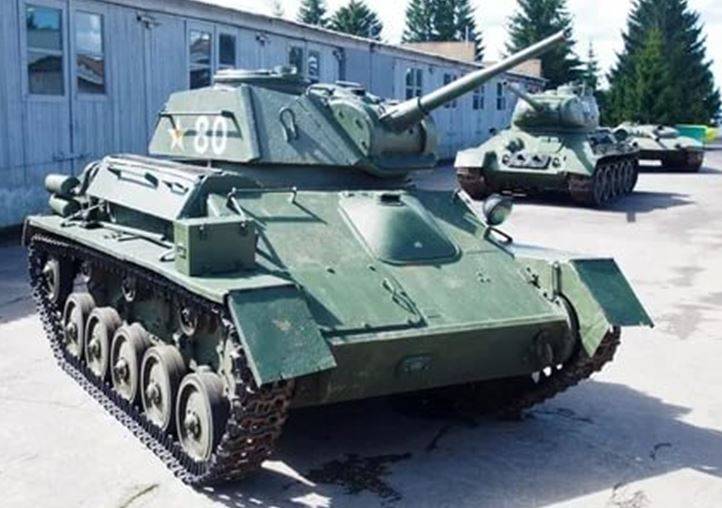
For a double turret, the diameter of the shoulder strap was increased from 966mm to 1112mm, due to the increase in the internal volume of the turret, its dimensions and weight increased, while the tank weight reached 11,6 tons and a more powerful power plant was required. It was decided to force the GAZ-203 power plant to 170 horsepower, which led to a sharp decrease in its reliability during operation of the tank.
The T-80 tank did not exist for long, in April 1943 it began mass production and in August it was discontinued, all in all 70 T-80 tanks were produced. There were several reasons for this.
The tank in its low performance in the 1943 year did not meet the increased requirements for the tank, and according to the results of the fighting on the Kursk Bulge, it became clear to everyone that not only the T-70 (T-80), but also the T-34-76 could not resist the new German tanks, and requires the development of a new more powerful tank. By this time, the mass production of T-34 was debugged and optimized, its cost was reduced and satisfactory quality ensured, and the army needed a large number of self-propelled SU-76M units based on the T-70 tank and factory facilities were reoriented to the production of SU-76M self-propelled guns .
The T-60, T-70 and T-80 tanks had low combat effectiveness both against enemy armored vehicles and with the support of infantry. They could not fight with the most common German tanks of the time Pz.Kpfw.III and Pz.Kpfw.IV and the StuG III assault guns, and as a tank for direct infantry support they had insufficient armor protection. The German 75-mm Pak 40 anti-tank guns hit him with the first shot from any distance and angle.
Compared to the already obsolete light German Pz.Kpfw.II, the T-70 had slightly better armor protection, but due to the presence of a crew of two people, it was significantly inferior to it in handling on the battlefield.
The armor of the tank was low and it was easily hit by almost all the tanks and anti-tank weapons that were in service at the time in the German army. The armament of the tank was not enough to defeat enemy tanks, for the 1943 year in the German army there were already well-protected tanks Pz.Kpfw.III, Pz.Kpfw.IV and Pz.Kpfw.V, 45-mm gun T-70 could not hit them . The power of the 45-mm cannon was clearly insufficient both to combat enemy anti-tank guns and German armored vehicles, the frontal armor of even medium modernized PzKpfw III and PzKpfw IV could be penetrated only from extremely short distances.
This was also due to the fact that with the advent of large quantities of T-34 on the battlefield, the Wehrmacht qualitatively strengthened tank and anti-tank artillery. During the 1942 year, tanks, self-propelled guns and anti-tank guns began to arrive in the Wehrmacht, armed with long-barreled 75-mm guns, hitting the T-70 at any angle and combat distance. The sides of the tank were especially vulnerable, even for smaller artillery, up to the outdated 37-mm Pak 35 / 36 gun. In such a confrontation, the T-70 had no chance, with well-trained anti-tank defense, the T-70 units were doomed to high losses. Due to its low efficiency and high losses, the T-70 enjoyed an unflattering reputation in the army and was mostly negatively associated with it.
The climax of the combat use of the T-70 was the battle of Kursk. In the Prokhorov battle, in two corps of the first echelon of 368 tanks there were 38,8% of T-70 tanks. As a result of the battle, our tankers suffered terrible losses, the 29-th Panzer Corps lost 77% of the tanks participating in the attack, and the 18-th Panzer Corps 56% of the tanks. This was largely explained by the presence of a number of attacking tanks almost unprotected from powerful German anti-tank weapons of light T-70 tanks. After the Battle of Kursk, the T-70 was discontinued.
Medium Tank T-34-85
The T-34-76 medium tank at the first stage of the war was quite competitive with the medium and German tanks PzKpfw III and PzKpfw IV. With the installation of the KwK 75 L / 40 long-barreled 48-mm gun on the PzKpfw IV tank, and especially with the advent of the Pz.Kpfw.V Panther with the powerful long-barreled 75-mm KwK 42 L / 70 gun and the Pz.Kpfw.VI Xiger with the Pz.Kpfw.VI Tiger -mm cannon KwK 88 L / 36, the T-56-34 tank was hit by these tanks from a distance of 76-1000 m, and he could hit them from a distance of no more than 1500 m. In this regard, the question arose of installing a more powerful tank on the tank guns.
Two options for installing an 85-mm gun, already used on the KV-85 and IS-1 heavy tanks D-5T guns and 85-mm C-53 guns, were considered. To install a new gun, an increase in tower overhead from 1420mm to 1600mm and the development of a larger tower were required.
The base was taken from the tower of the T-43 experimental medium tank. The tower was designed for two versions of guns. The D-5T gun was more bulky and made it difficult for the turret loading in a limited volume; as a result, the tank was put into service with the C-53 gun, but the first batches of tanks were also produced with the D-5T gun.
Simultaneously with the development of the new triple tower, another significant drawback of the T-34-76 was eliminated, which was related to the overload of the commander in connection with the functions of the gunner assigned to him. In a more spacious tower housed the fifth crew member - the gunner. The visibility of the commander in the tank was improved by installing a commander’s turret with a rotating hatch and more advanced observation devices. Also strengthened the reservation of the tower. the thickness of the armor of the forehead of the tower was increased to 90mm and the walls of the tower to 75mm.
The increase in firepower and security of the tank did not help to put it on a par with the German Pz.Kpfw.V "Panther" and Pz.Kpfw.VI Tiger. The frontal armor of Pz.Kpfw.VI Tiger was 100mm thick, and that of Pz.Kpfw.V Panther 60-80mm and their guns could hit the T-34-85 from 1000-1500m, and the latter pierced their armor only at 800 — 1000 meters and only at a distance of about 500 meters are the thickest places on the forehead of the tower.
The lack of firepower and security of the T-34-85 had to be compensated for by their massive and competent use, improved control of tank troops and the establishment of interaction with other combat arms. The leading role in the fight against enemy tanks largely passed to the heavy tanks of the IS and SPG family.
KV-85 and IS-1 heavy tanks
With the advent of the German heavy tanks Pz.Kpfw.V Panther and Pz.Kpfw.VI Tiger in the 1942 year, the Soviet KV-1 heavy tank with insufficient frontal protection and armed with the 76,2-mm ZIS-5 L / 41,6 cannon could no longer equal resist them. Pz.Kpfw.VI Tiger hit the KV-1 at almost all distances of a real battle, and the 76,2-mm gun KV-1 could penetrate only the side and stern armor of this tank from distances not exceeding 200 m.
The question arose of developing a new heavy tank armed with an 85-mm cannon, and in February of the 1942 of the year it was decided to develop a new IS-1 heavy tank, the 85-mm D-5T gun was developed for it and, for its installation in the tank, a new turret with enlarged to 1800mm diameter of the shoulder strap of the tower.
The KV-85 tank was a transition model between the KV-1 and the IS-1, the chassis and many elements of the hull reservation were borrowed from the first, and the enlarged tower from the second.
After a shortened test cycle, the KV-85 tank was put into service in August 1943. The tank was produced from August to November 1943 and was discontinued due to the launch of the more advanced IS-1 tank in a series. A total of 148 tanks were produced.
The KV-85 tank was a classic layout with a crew of 4 people. The radio operator arrow had to be excluded from the crew, since the installation of a larger tower did not allow placing it in the hull. The windshield turned out to be broken, since a turret box had to be installed for the new tower. The tower was welded, armor plates were located with rational angles of inclination. On the roof of the tower was a commander's cupola. In connection with the exclusion from the crew of the radio operator gunner, the machine gun was mounted motionless in the tank body and was controlled by a driver.
With the weight of the tank 46 tons, the tank’s hull had the same protection as the KV-1: the thickness of the armor of the forehead of the hull was 75mm, the sides of the hull were 60mm, the forehead and sides of the tower were 100mm, the roof and bottom were 30mm, the turret reservation thickness was only increased to 100mm . The tank's defense was insufficient to withstand the new German Pz.Kpfw.V Panther and Pz.Kpfw.VI Tiger.
The armament of the tank consisted of a long-barreled 85-mm gun D-5Т L / 52 and three 7,62mm machine guns DT.
As a power plant, a V-2K diesel engine with 600 horsepower was used, providing a speed along the 42 highway km / h and a cruising range of 330 km.
The undercarriage was borrowed from the KV-1 tank with all its drawbacks and contained on one side six twin road wheels of small diameter with a torsion bar suspension and three support rollers. The use of the KV-1 chassis led to its overload and frequent breakdowns.
The KV-85 tank was inferior in terms of firepower and defense to the German Pz.Kpfw.V “Panther” and Pz.Kpfw.VI Tiger and was mainly used to break through the enemy’s prepared defense, and suffered heavy losses.
The tank's defense could only withstand the fire of German guns with a caliber of less than 75 mm, the most common German anti-tank 75-mm Pak 40 gun at that time successfully hit him. Any German 88-mm gun easily penetrated the armor of the KV-85 body from any distance. The KV-85 tank gun could only fight the new German heavy tanks at distances up to 1000m. Nevertheless, as a temporary solution that arose in the 1943 year, the KV-85 was a successful design as a transitional model for more powerful heavy tanks of the IS family.
With the KV-85 testing of a new turret with an 85-mm cannon, development and testing of the IS-1 tank continued. A KV-85 tank tower was installed on this tank and a new hull with enhanced armor was developed. The IS-1 tank was put into service in September 1943, its mass production lasted from October 1943 to January 1944, all in all 107 tanks were produced.
The layout of the tank was similar to the KV-85 with a crew of 4 people. Due to the denser layout of the tank, its weight was reduced to 44,2 tons, which facilitated the running performance and increased its reliability
The tank had more powerful hull armor, the thickness of the forehead of the forehead was 120mm, the bottom was 100mm, the turret front plate was 60mm, the hull sides were 60-90 mm, the bottom and roof were 30mm. The reservation of the tank was equal and even superior to the reservation of the German Pz.Kpfw.VI Tiger and here they performed on equal terms.
As a power plant, a V-2IS engine with 520 horsepower was used. It provided speed on the 37 km / h highway and 150 km cruising range. The chassis was used from the KV-85 tank.
The IS-1 tank became a transitional model to the IS-2 with more powerful weapons
Heavy tanks IS-2 and IS-3
The IS-2 tank was essentially a modernization of the IS-1, aimed at further increasing its firepower. In terms of layout, it did not fundamentally differ from the IS-1 and KV-85. Due to the denser layout, it was necessary to abandon the driver’s hatch, which often led to his death in the defeat of the tank.
With a tank weight of 46 tons, its armor protection was very high, the thickness of the armor of the forehead of the hull was 120mm, the bottom of the arm was 100mm, the sides of the arm were 90mm, the forehead and sides of the turret were 100mm, the roof was 30mm, and the bottoms were 20mm. The armor resistance of the forehead of the hull was also increased due to the exclusion of a broken upper frontal sheet.
For the IS-2 tank, the X-NUMX-mm gun D-122T was specially developed, the IS-25 turret had a reserve for modernization and allowed to put a more powerful gun without major alterations.
As a power plant, a V-2-IS diesel engine with 520 horsepower was used. providing speed on the highway 37 km / h and range 240 km.
The IS-2 tank was much more protected than the Pz.Kpfw.V Panther and Pz.Kpfw.VI Tiger and was only slightly behind the Pz.Kpfw.VI Tiger II. Nevertheless, the 88-mm KwK 36 L / 56 gun pierced the lower frontal sheet from a distance of 450 m, and the anti-tank 88-mm Pak 43 L / 71 gun pierced the turret at medium and long distances from a distance of the order of 1000 m. In this case, 122- mm IS-2 gun pierced the upper frontal part of the Pz.Kpfw.VI Tiger II only from a distance of up to 600 m.
Since the main purpose of the Soviet heavy tanks was the breakthrough of heavily fortified enemy defensive strips saturated with long-term and field fortifications, serious attention was paid to the high-explosive fragmentation of the shells of the 85-mm gun.
The IS-2 tank was the most powerful Soviet tank that took part in the war, and one of the strongest vehicles in the heavy tank class. He was the only Soviet heavy tank, which, in terms of its characteristics, could withstand German tanks of the second half of the war and provided for offensive operations with overcoming a powerful and deeply echeloned defense.
The IS-3 tank was the last model in this series of heavy tanks. It was developed already at the end of the war and did not take part in hostilities, it only took place at a parade in Berlin in September 1945 in honor of the victory of the Allied forces in World War II.
In layout and armament, it was an IS-2 tank. The main objective was to significantly increase its armor protection. When developing the tank, the conclusions and recommendations on the results of the use of tanks during the war were taken into account, special attention was paid to the massive defeat of the frontal parts of the defense of the hull and turret. Based on the IS-2, a new streamlined body and tower were developed.
A new frontal assembly of the tank’s hull was developed, giving it a tri-sloping “pike nose” shape, and the driver’s hatch, which was not available on the IS-2, was returned. The tower was cast, it was given a drop-shaped streamlined shape. The tank had good armor protection, the thickness of the armor of the forehead of the hull was 110mm, the sides were 90mm, the roof and bottom were 20mm. The thickness of the armor of the forehead of the tower reached 255mm, and the wall thickness at the bottom was 225mm and at the top 110mm.
The power plant, weapons and chassis were borrowed from the IS-2 tank. Due to the many design flaws of the tank, which could not be eliminated, the IS-3 in 1946 was removed from service.
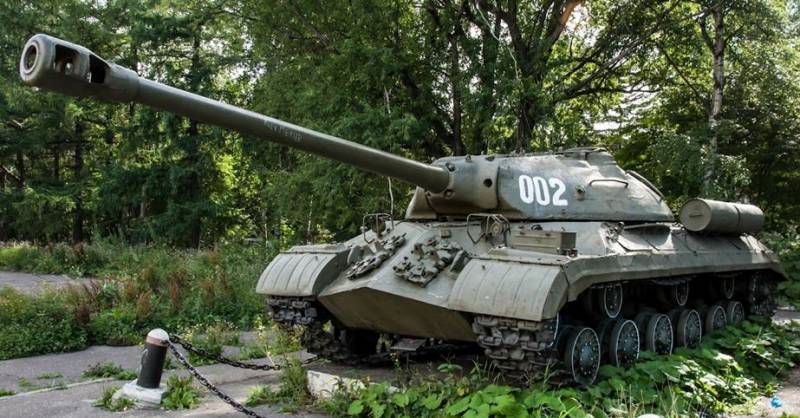
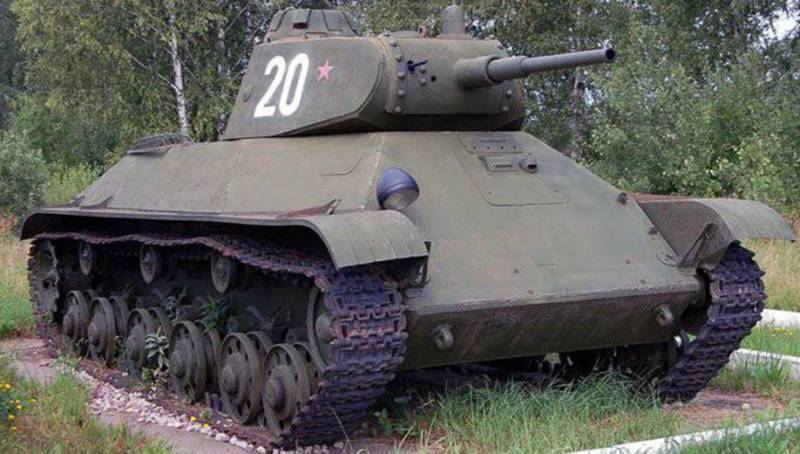
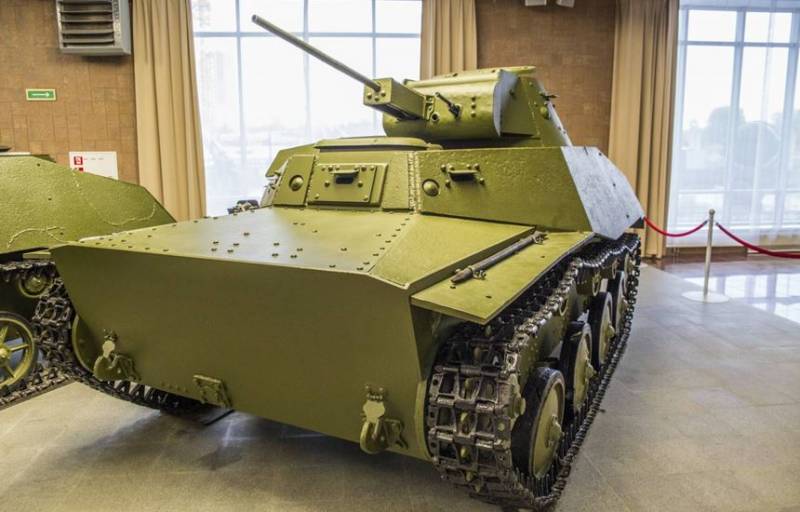
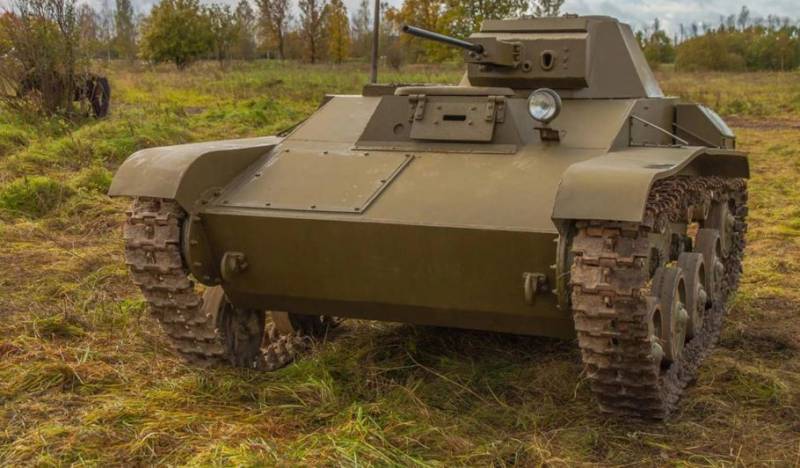
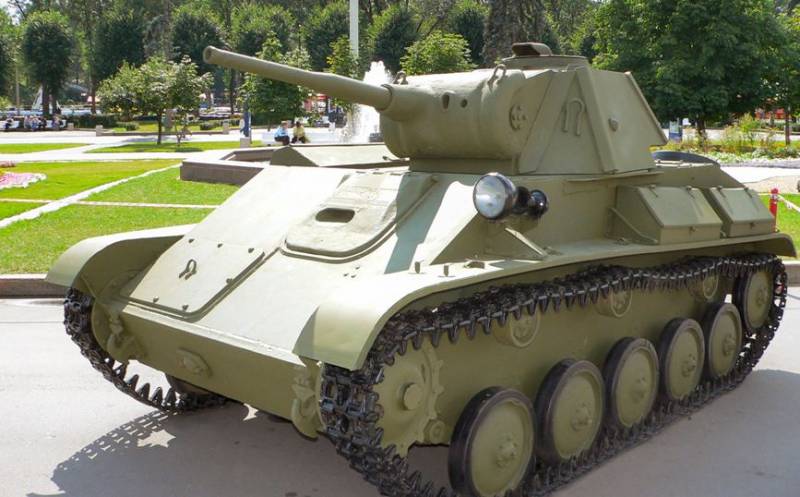
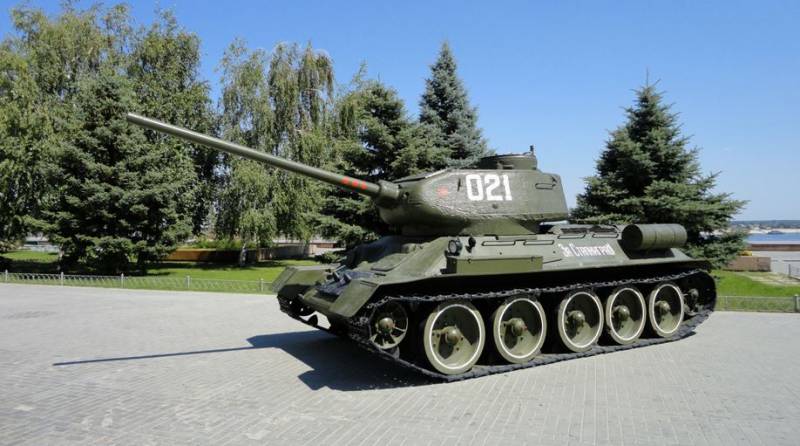
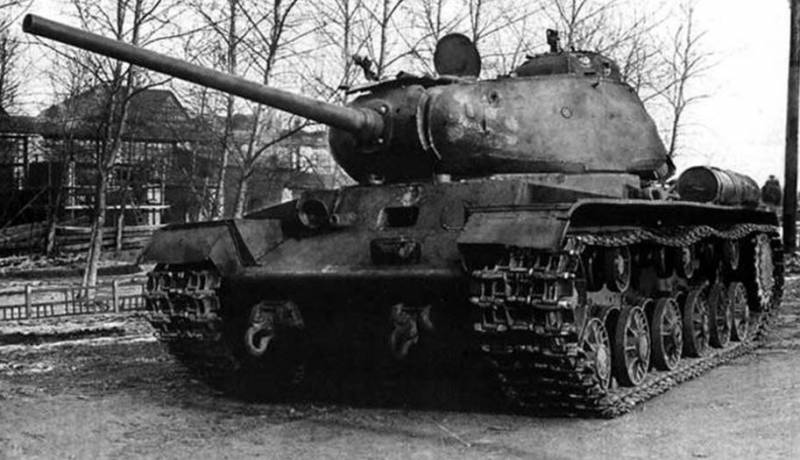
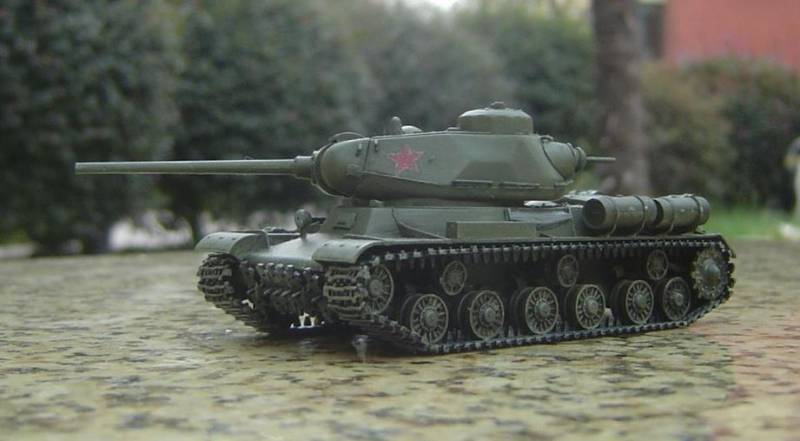
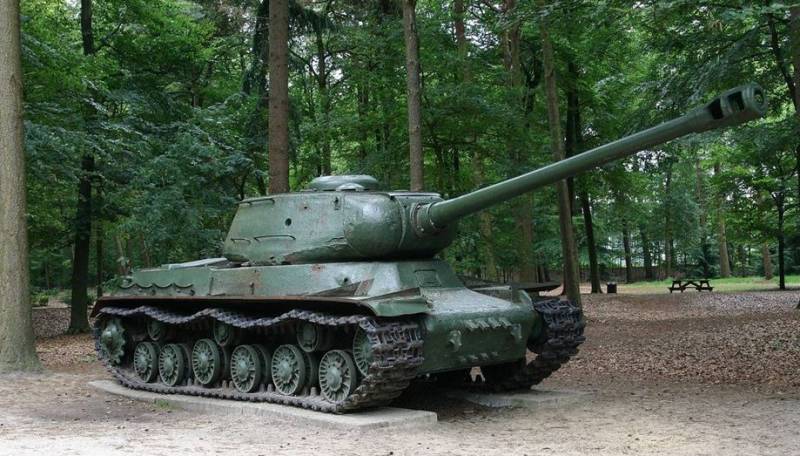
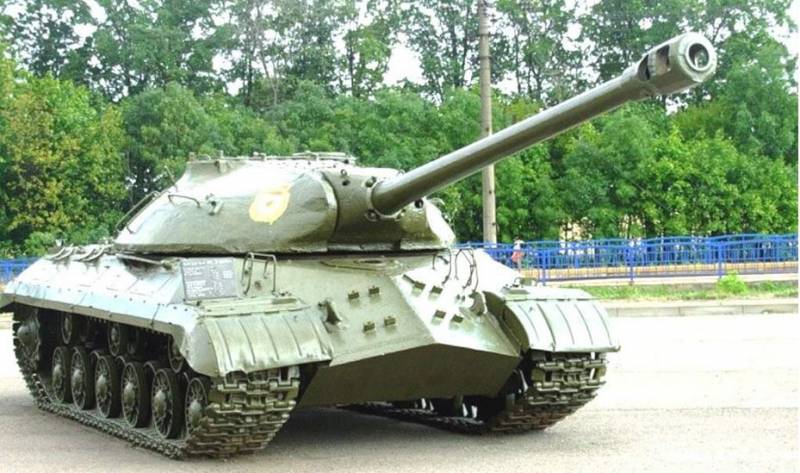
Information